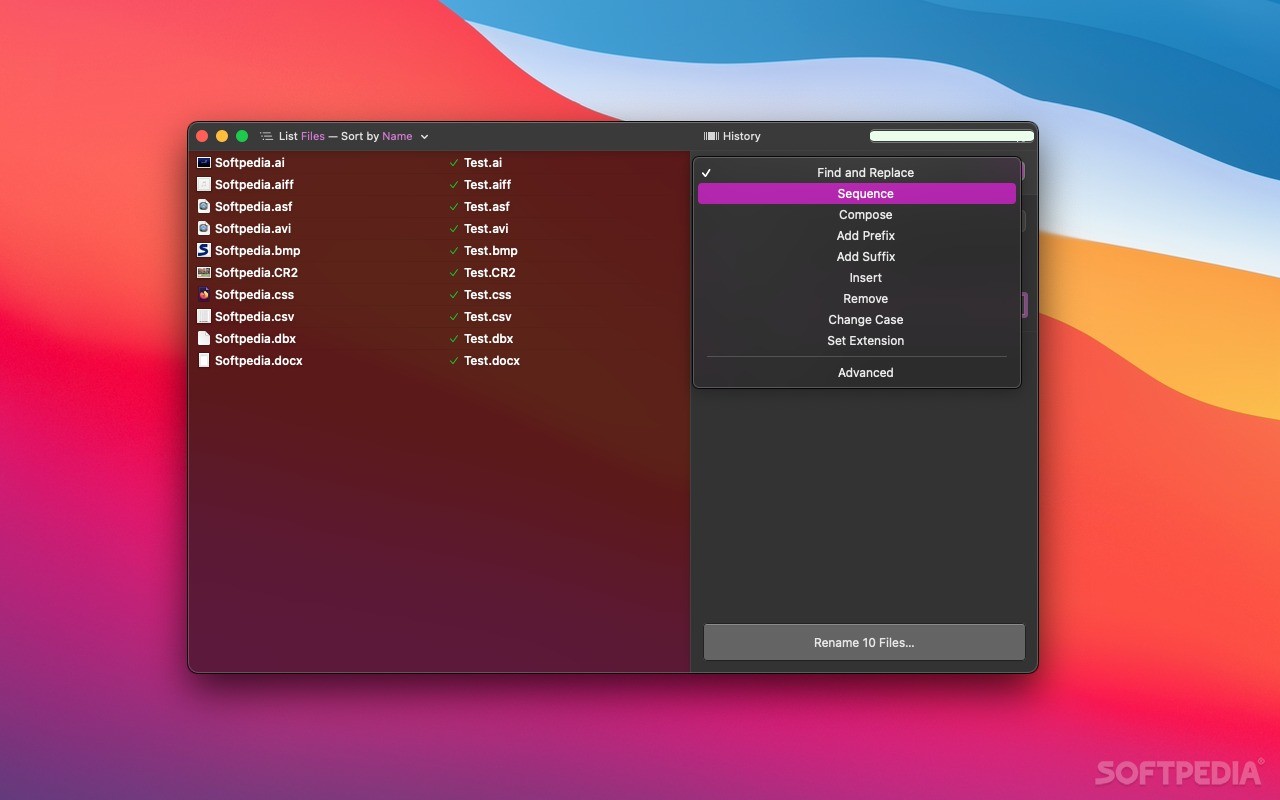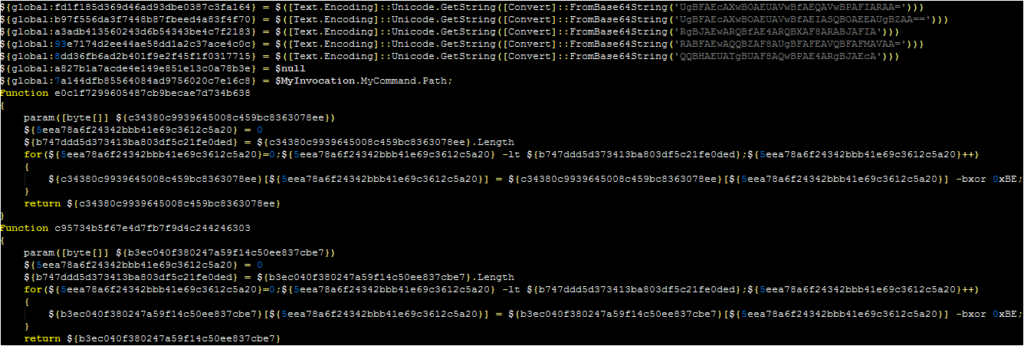

To configure an application to access a smart tunnel, use the appl command in WebVPN smart tunnel configuration mode. Puts the router in appfw-policy- protocolconfiguration mode and beginĬonfiguring inspection parameters for a given protocol. ! Apply the inspection rule to all HTTP traffic entering the FastEthernet0/0 interface. ! Apply the policy to an inspection rule. Transfer-encoding type default action allow alarm Request-method extension default action allow alarm Request-method rfc default action allow alarm Max-header-length request 1 response 1 action allow alarm Traffic entering the FastEthernet0/0 interface.Ĭontent-length maximum 1 action allow alarmĬontent-type-verification match-req-rsp action allow alarm After the policy is defined, it is applied to the inspection rule “firewall,” which will inspect all HTTP
#NAME MANGLER SNIPPET MD5 HOW TO#
The following example shows how to define the HTTP application firewall policy “mypolicy.” This policy includes all supported (For example, a signature may specify thatĪn HTTP data stream containing the POST method must reset the connection.) These protocol conditions and reactions are definedīy the end user via a command-line interface (CLI) to form an application firewall policy (also known as a security policy). That specifies which protocol conditions must be met before an action is taken. A static signature is a collection of parameters The application firewall uses static signatures to detect security violations. IOS Firewall via the ip inspect name command. This command puts the router in application firewall policy (appfw-policy- protocol)configuration mode, which allows you to begin defining the application firewall policy that will later be applied to the Cisco

If this command is not issued, an application firewall policy cannot be created. No appfw policy-name policy-name Syntax Description To remove a policy from the router configuration, use the no form of this command. To define an application firewall policy and put the router in application firewall policy configuration mode, use the appfw policy-namecommand in global configuration mode. Parameter-map type urlfilter eng-filter-profileĬreates or modifies a parameter map for URL filtering parameters. The following example turns on the filtering algorithm: When you are creating or modifying a URL parameter map, you can enter the allow-modesubcommand after you enter the parameter-map type urlfilter command.įor more detailed information about creating a parameter map, see the parameter-map type urlfilter command. Turns off the default mode of the filtering algorithm. Turns on the default mode of the filtering algorithm. To disable this feature, use the no form of this command. To turn the default mode of the filtering algorithm on or off, use the allow-modecommand in URL parameter-map configuration mode. Router(config-profile-map)# all no-auth Related Commandsĭefines or modifies an individual authentication and authorization cache profile based on an exact username match.Ĭreates an entry in a cache profile group that allows authentication and authorization matches based on a regular expression. Router(config)# aaa cache profile localusers No authentication is performedįor these users because the no-auth keyword is used. The following example caches all authorization requests in the localusers cache profile group. Use the all command for specific service authorization requests, but it should be avoided when dealing with authentication requests. Use the all command to cache all authentication and authorization requests. This command was integrated into Cisco IOS Release 15.0(1)M.

This command was integrated into Cisco IOS Release 12.2(33)SRC. Profile map configuration (config-profile-map) (Optional) Specifies that authentication is bypassed for this user. To disable the caching of all requests, use the no form of this command. To specify that all authentication and authorization requests be cached, use the allcommand in profile map configuration mode. authentication event server dead action authorizeĪll profile map configuration through browser-proxy.authentication event server alive action reinitialize.authentication event no-response action.authentication command disable-port ignore.authentication command bounce-port ignore.application (application firewall policy).all profile map configuration through browser-proxy.


 0 kommentar(er)
0 kommentar(er)
